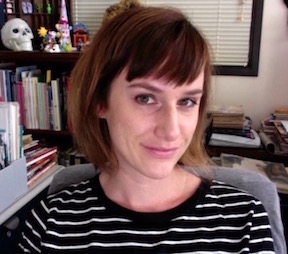Anna Culbertson, MA, MSLIS, is a librarian specializing in rare books and special collections. She provides primary source research instruction, collaborates with teaching faculty on book history, printing, and graphic design topics, and curates the library's speculative fiction and comics arts collections. Her research interests include feminist science fiction and comics, primary sources on feminist separatism, and ideas of utopia in speculative fiction and alternative religious movements.
Title
"Strange Data" (A crowdsourced web of pulp science fiction stories)
Goal
- Bring together digital pedagogy and the printed archive
- Construct and curate a collaborative electronic resource on pulp science fiction
that:
- Maps a critical network of science fiction authors, titles, genres, and
themes using both metadata and text
- Provides a research and navigation aid to a historically significant, but
critically underrepresented body of literature
- Becomes a continually evolving resource that is crowdsourced by
undergraduates, provides a curricular connection to both SDSU's Special
Collections and GE Program, and engages students in the
practices/techniques of writing for Digital/Scholarly Publications
Lesson Plans
Critical Portfolio Throughout this course, in place of several longer and more formal critical assignments, everyone will be required to produce a CRITICAL PORTFOLIO consisting of short blurbs (400-500 words each), in which you discuss either (1) that day's reading; or (2) a text from SPECIAL COLLECTIONS (see below). The purpose of this assignment is both to engage you critically with course texts and prepare you for class discussions, and also to train you to write economical, critical prose, such as might be found in either an academic publication, creative nonfiction essay, or an SF fan-site. Consider the following in your work: -Develop an idea, a close reading, or a line of analysis. -Explore some important details that most readers might overlook and explain their significance. -Don't be afraid to take risks. -A formal thesis is not required, although the best and most successful entries are usually the most focused, developing a single, coherent, critical idea to a full extent. Steps: (1) Go to special collections and find and read a story from one of the pulp magazines (2) Using the overhead scanner, copy the cover art and first page of the story (3) Write up your portfolio entry. (4) Create a simple .pdf that includes your portfolio entry and the two scanned images (5) Contribute to an electronic publication pilot: a collaboratively authored critical introduction/navigation tool to SF pulp magazines. We'll be selecting a number of entries for the first round of publication, and if yours is selected, you will get some nice bonus points. This is optional, however, and you are not required to participate.
Outcome/Examples
One outcome or example of a student project: http://scalar.usc.edu/works/strange-data/index
Reflection
The project was a lot of fun - we enjoyed developing the assignment together based on our shared nerd-appreciation for the cultural value of pulp sf, and we were pleasantly surprised at how much student work we found ourselves having to choose from for the purposes of piloting the project. We found SCALAR to be a no-brainer format for the resource we wanted to create, and it was easy to use. We developed basic image and metadata standards for adding the entries to the site, and began creating tags based on an exhaustive online science fiction encyclopedia. Developing editorial standards was somewhat challenging, as we were dealing with a wide range of writing levels and styles, and we decided it would be best to hold "edit-a-thons" with a few students who volunteered to help. We saw great potential in this part of the project with more students involved. Ultimately, we chose eight entries for the pilot phase, and were already impressed with Scalar's ability to map connections. Definitely recommended.
NEH Reflection
The workshop brought out new ideas for collaboration (we met at the workshop!) and broadened our understanding of what DH might look like in the classroom setting. It also gave us new perspectives on what could be considered DH and the value of experimenting with hybrid pedagogies that apply both digital and analog methods to one set of outcomes.
click here for pdf file